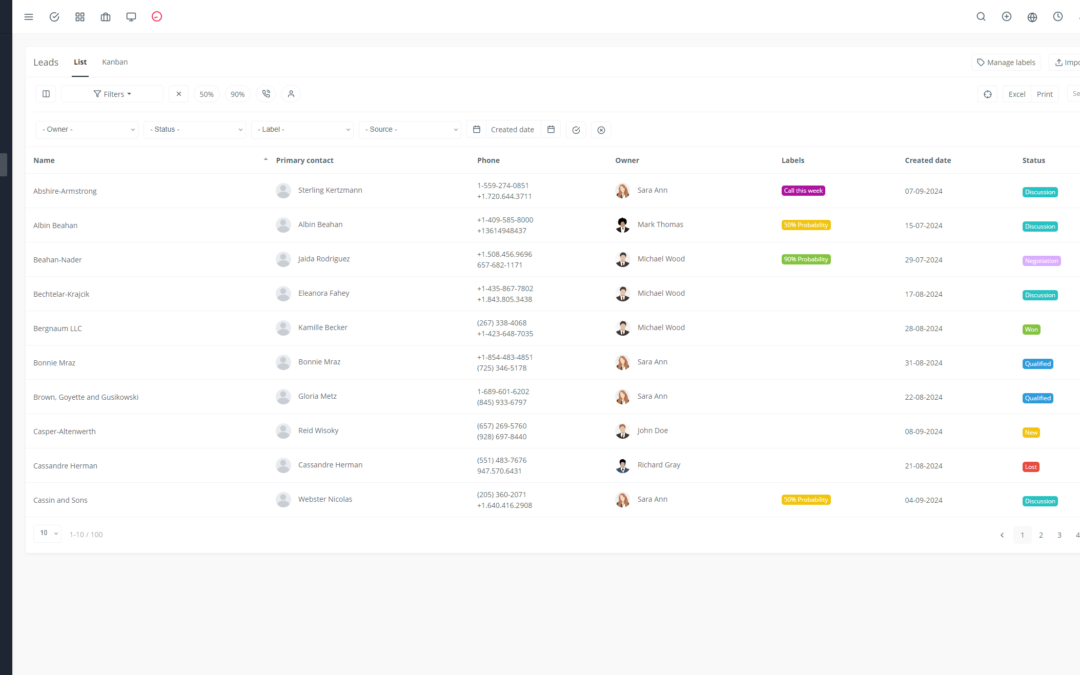Opportunity tracking is a crucial process for sales and marketing teams 🎯. It helps transform leads into customers and maximize revenue. However, managing opportunities can be complex, especially when coordinating the efforts of multiple teams. This is where integrating opportunity tracking tools with project management tools comes in—a solution that offers efficient collaboration and tangible results 🚀.
Integration: A Major Asset for Effective Collaboration
Integrating opportunity tracking tools with project management tools creates a fluid and transparent collaborative ecosystem. Imagine a single dashboard where you can visualize the status of your opportunities, associated tasks, and progress made.
Here are some key benefits of this integration:
Improved Communication and Collaboration: Sales, marketing, and project management teams can easily share information and collaborate on opportunities. 💬
Holistic View of Opportunities, Tasks, and Progress: Integration allows you to track the progress of each opportunity and its associated tasks, providing complete visibility into projects. 📊
Automation of Opportunity Tracking and Management Processes: Tools can automate repetitive tasks, freeing up time for higher-value activities. 🤖
Save Time and Reduce Errors: Centralizing information and automating processes saves time and minimizes errors. ⏱️
Informed and Strategic Decision-Making: Data and analytics provided by integrated tools allow for informed decisions and better priority management. 🧠
Improved Performance Tracking and Key Indicator Management: Integration allows you to track opportunity performance, identify trends, and optimize strategies. 📈
Identify the Most Promising Opportunities and Prioritize Them: Tools can help identify the most promising opportunities and prioritize them based on various criteria. ✨
Increase Conversion Rates and Revenue: By improving opportunity management and collaboration between teams, integration can contribute to increasing conversion rates and revenue. 💰
Choosing the Right Tools and Optimizing Integration
Here are some key steps for successful integration of opportunity tracking and project management tools:
Choose the Right Tools: It’s important to choose tools that meet your company’s specific needs and integrate easily with each other. 🔎
Seamless and Efficient Tool Integration: Ensure that the integration is smooth and that data is shared in real-time between tools. 🔄
Train Users on Using Integrated Tools: Training is essential for users to effectively utilize the integrated tools. 📚
Monitor and Optimize Tool Integration: It’s important to monitor tool integration and optimize it based on user needs and feedback. ⚙️
Measure the Impact of Integration on Performance: It’s important to measure the impact of integration on company performance, such as analyzing conversion rates and revenue. 📊
Establish a Culture of Collaboration and Transparency: Tool integration should be accompanied by a culture of collaboration and transparency within the company. 🤝
Promote a Proactive and Agile Approach to Opportunity Management: Tool integration should enable a proactive and agile approach to managing opportunities. ⚡️
Adapt to Changing Business Needs and Requirements: Tool integration should be flexible and scalable to meet the changing needs and requirements of the business. 🔄
Stay Competitive in an Ever-Evolving Market:* Tool integration helps stay competitive in an ever-evolving market. 💪
By integrating opportunity tracking tools with project management tools, businesses can improve collaboration, communication, and team efficiency, while optimizing opportunity management and maximizing revenue. 📈 The success of this integration relies on meticulous planning, efficient execution, and constant adaptation to business needs. 🚀

